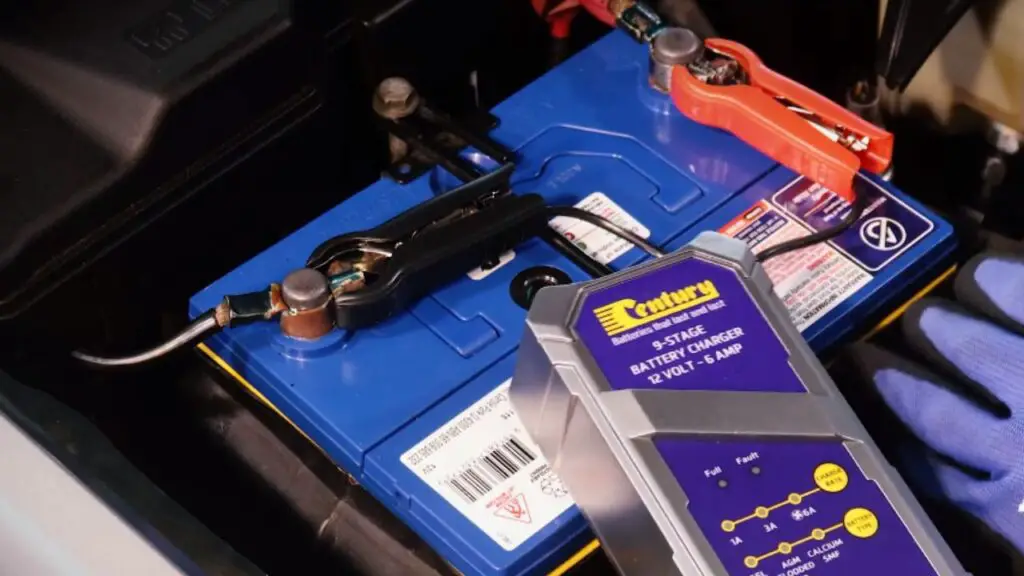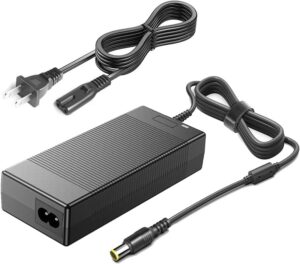Can you start a car with a battery charger connected? The answer is yes, and here’s how! Picture this: you’re in a rush, ready to hit the road, but your car battery is dead. Panic sets in, but wait! Before you reach for the jumper cables, consider an alternative solution that can save you time and hassle. By connecting a battery charger directly to your car’s battery, you can revive it without needing another vehicle’s help. In this article, we’ll explore the benefits, precautions, and step-by-step process of starting your car with a battery charger connected. So, let’s dive in and get your wheels rolling again!

Can You Start a Car with a Battery Charger Connected?
If you’ve ever found yourself with a dead car battery, you know how frustrating it can be. Fortunately, there are various solutions available to jumpstart your vehicle and get you back on the road. One common method is using a battery charger, but a question often arises: can you start a car with a battery charger connected? In this article, we will explore this topic in detail, discussing the implications, safety precautions, and other factors to consider.
The Functionality of a Battery Charger
To understand if a car can be started with a battery charger connected, it’s important to comprehend how a battery charger works. A battery charger is a device designed to restore electrical energy to a depleted battery. It achieves this by supplying a controlled electric current to the battery.
When a battery is connected to a charger, the charger delivers electrical energy to the battery through its positive and negative terminals. The charger’s internal circuitry regulates the current flow to ensure that the battery is charged safely and efficiently. However, this raises the question of whether the charging process can also power the vehicle’s starting system.
Starting a Car with a Battery Charger Connected
While it may seem convenient to start a car directly from a battery charger, it is generally not recommended. Here’s why:
1. Insufficient Amperage: Most battery chargers are designed to provide a lower current output compared to what is required to start a car’s engine. The starting system demands a significant amount of power to turn over the engine, and a typical battery charger may not deliver enough amperage for this purpose.
2. Overloading the Charger: Attempting to start a car directly from a battery charger can overload the charger’s circuitry. This can potentially damage the charger, rendering it ineffective for future use.
3. Prolonged Charging: It is important to allow the battery charger to fully charge the battery before attempting to start the vehicle. Starting the car prematurely can interrupt the charging process and leave the battery in a partially charged state.
Safe Practices for Using a Battery Charger
While starting a car with a battery charger connected is not advisable, there are safe practices to follow when using a charger:
1. Disconnect the Charger: Before attempting to start the vehicle, always disconnect the battery charger from the battery. This ensures that the charger is not in use while the starting system is engaged.
2. Follow the Charger’s Instructions: Different battery chargers may have specific instructions for use. Be sure to read and follow the manufacturer’s guidelines to ensure safe and effective charging.
3. Allow Sufficient Charging Time: It is important to give the battery charger enough time to fully charge the battery. Charging times can vary depending on the charger’s specifications and the battery’s condition. Patience is essential to ensure a complete charge.
Alternative Methods for Jumpstarting a Car
While starting a car with a battery charger connected may not be ideal, there are alternative methods you can consider:
1. Using Jumper Cables: Jumper cables are a common and effective way to start a car with a dead battery. By connecting your car’s battery to another vehicle’s charged battery, you can transfer power and start the engine. Remember to follow the proper safety precautions when using jumper cables.
2. Portable Jump Starter Packs: Portable jump starter packs have gained popularity in recent years. These compact devices contain a built-in battery that can deliver the necessary power to jumpstart a vehicle. They often include features like USB ports for charging electronic devices and can be a convenient solution for emergency situations.
3. Calling for Professional Assistance: If you are unsure or uncomfortable with jumpstarting your car yourself, calling a professional roadside assistance service is a reliable option. They have the expertise, tools, and experience to safely jumpstart your vehicle.
Preventative Measures to Avoid Dead Batteries
Dealing with a dead car battery can be inconvenient, but there are preventative measures you can take to minimize the chances of encountering this issue:
1. Maintain Regular Battery Maintenance: Keep your battery clean and free of corrosion. Regularly inspect the battery terminals and cables for any signs of damage.
2. Limit Battery-Draining Accessories: Avoid leaving electronic devices or accessories plugged in while the engine is off. Excessive drain on the battery can result in a weakened charge.
3. Regularly Start and Drive Your Vehicle: If your car is not used frequently, regularly starting and driving it can help maintain the battery’s charge. Extended periods of inactivity can lead to battery drain.
4. Consider a Battery Trickle Charger: If your car will be out of use for an extended period, utilizing a battery trickle charger can help keep your battery charged and ready for when you need it.
In Conclusion
While it is not recommended to start a car with a battery charger connected, understanding the functionality and limitations of both the charger and the starting system is crucial. Following safe practices and exploring alternative jumpstarting methods can help you effectively handle a dead car battery situation. By implementing preventative measures and staying prepared, you can minimize the inconvenience and frustration caused by a dead battery. Remember, when in doubt, seek professional assistance to ensure safety and proper handling of your vehicle’s battery.
How to use Car Battery Charger
Frequently Asked Questions
Can you start a car with a battery charger connected?
Yes, you can start a car with a battery charger connected under certain conditions. However, it is important to follow the correct procedures to avoid any potential risks.
Is it safe to start a car with a battery charger connected?
Starting a car with a battery charger connected can be safe if done correctly. However, it is recommended to consult the vehicle’s manual or seek professional advice to ensure proper safety precautions are taken.
What are the steps to start a car with a battery charger connected?
To start a car with a battery charger connected, follow these steps:
- Ensure the battery charger is properly connected and functioning.
- Turn off all electrical components in the vehicle, such as lights and radio.
- Insert the key into the car’s ignition and turn it to the “on” position, but do not start the engine.
- Allow the battery charger to charge the battery for a few minutes.
- Once the battery has sufficient charge, turn the ignition to the “start” position to start the car.
What are the risks of starting a car with a battery charger connected?
Starting a car with a battery charger connected can pose risks if not done properly. The charger must be compatible with the vehicle and connected correctly to avoid electrical damage or injury. It is always advised to consult professional assistance if unsure.
Can starting a car with a battery charger connected damage the vehicle’s electrical system?
If the battery charger is compatible and connected properly, the risks of damaging the vehicle’s electrical system are minimal. However, using an incompatible charger or connecting it incorrectly may result in electrical damage, so it is crucial to exercise caution.
Final Thoughts
Starting a car with a battery charger connected is not recommended. It can pose a risk of damaging the car’s electrical system or even causing a fire. While some modern chargers come with a feature that allows starting the car with the charger connected, it is still advisable to disconnect the charger before starting the engine. Failing to do so may result in severe consequences. Therefore, it is crucial to follow proper safety guidelines and avoid attempting to start a car with a battery charger connected.


